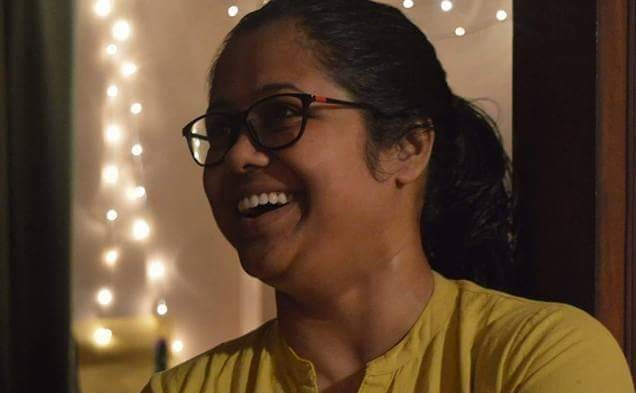CATEGORIES
#Breaking Stereotypes #She Speaks #Social ImpactOverview:
- This article revolves around a childhood memory from Mampi’s past.
- Mampi reflects on cultural practices that contribute to gender power imbalances.
- She raises important questions about the expectations placed on women in society.
- The story emphasizes the ongoing influence of outdated traditions and superstitions in Bengali culture.
Childhood Curiosity
I do not remember how old I was. I was in that stage of life when one has an abundance of queries, all being almost as important as if fundamental to advancing the discovery of the ‘origin of species,’ but only a few enthusiasts to encourage, entertain, and engage with such great queries.
I was very young! Indeed!
Back then, I often stayed at my maternal grandparents’ house.. My father was posted in a different town for work. Thus, it was convenient for my mother, a teacher at a high school in her native village, to stay at her parent’s house with her two small children. We started living with my uncles and aunts, all younger than my mother and still unmarried, and my grandparents and great-grandmother.
We lived in a semi-pucca house – with a concrete floor, wooden walls, and a roof of asbestos. There were five rooms in the house. The concept of separate living and bedrooms was not that popular in those days, I guess. So, every room was used for sleeping and entertaining guests interchangeably as needed. Apart from these, there was one storeroom. These rooms were connected to the kitchen and dining space through a long corridor, which was used partly as a store, and partly as a kitchen by my great-grandmother.

The Color Experiment
One lazy afternoon, I was rummaging through the almirahs kept in the storeroom adjacent to the long corridor, without anything specific in mind to look for—or maybe I did. I don’t know why or how I remembered that my great-grandmother had left the corridor while her cooking vessel was still on the top of the gas stove and that the food in the vessel was yet to be boiled enough to be eaten caught my attention
Almost immediately, I sensed the responsibility of being designated for , though unspoken, the task of completing the rest of the cooking. I came and stood in front of the gas stove. Suddenly, that million-dollar question came into my mind! Why is there no cooked item that is blue in color? You can see yellow lentil soup, red spicy curries, and green leafy vegetables. But nothing in blue, my favorite color? That was sad, indeed!
Immediately after this realization, I entered my youngest uncle’s room and grabbed two of his ballpoint pens. I took the refills out, and without any hesitation and delay, I threw them in the cooking pot with the expectation that the food would change its color to blue immediately. But alas! To my disappointment, the color did not change.
Unexpected Consequences
Meanwhile, my great-grandmother returned. She raised her eyebrows with suspicion immediately after seeing me so close to the gas stove. And, after a small round of interrogation, I gave in to the temptation of breaking down in front of her and sharing my disappointment for failing in the experiment I had just executed. She started crying immediately and murmured, “I am so hungry, have to cook again”.
Everyone came. My enthusiasm was reduced to the point of almost extinction and I stood there like a guilty child. My enthusiasm was reduced to the extent of being almost extinct and I stood there like a culprit. Soon after, I felt my mother’s hand pulling me by my ear. I endured quite a few hard slaps on the cheek as well.
Years later, this story became very popular in the family and it somehow managed to secure a permanent place in every light and fun-filled reminiscent session during family gatherings. By that time, I was a grown-up girl with new avenues to discover, new questions to ask, and dissent whenever it was necessary. With every mention of that story, a thousand more questions started emerging in my mind.

Reflecting on Traditions
Why was my great-grandmother cooking her food, and was she not allowed to eat from the family pot? Why was she expected to eat only once a day, before sunset? (She was hungry because she hadn’t eaten anything the previous night ..) Why was she not supposed to have fish, chicken, or any non-veg in her meal? Why are such sacrifices expected from women, and not men?
Why does her desire for physical intimacy need to be pacified? Why, even after acknowledging that these are superstitions, do we still practice them, especially in Bengal? In Bengal, widows are not supposed to eat non-veg food. Previously, they were also forced to have only one meal a day. This restriction is not there anymore. However, not eating non-veg is widely practiced even now.
I leave it to you all to think: what stops us from changing ourselves even after acknowledging that we are standing on the wrong side? Mampi Bose is a faculty at Azim Premji University, Bhopal. The views and opinions expressed in this article are those of the author and do not necessarily reflect the views or the positions of the organization she represents.
Conclusion:
In Bengal, widows are not supposed to eat non-veg food. In the past, they were also forced to have only one meal a day. This restriction is not there anymore. However, not eating non-veg is widely practiced even now. These cultural practices are deeply rooted in the realm of gender discrimination and need to be questioned.


